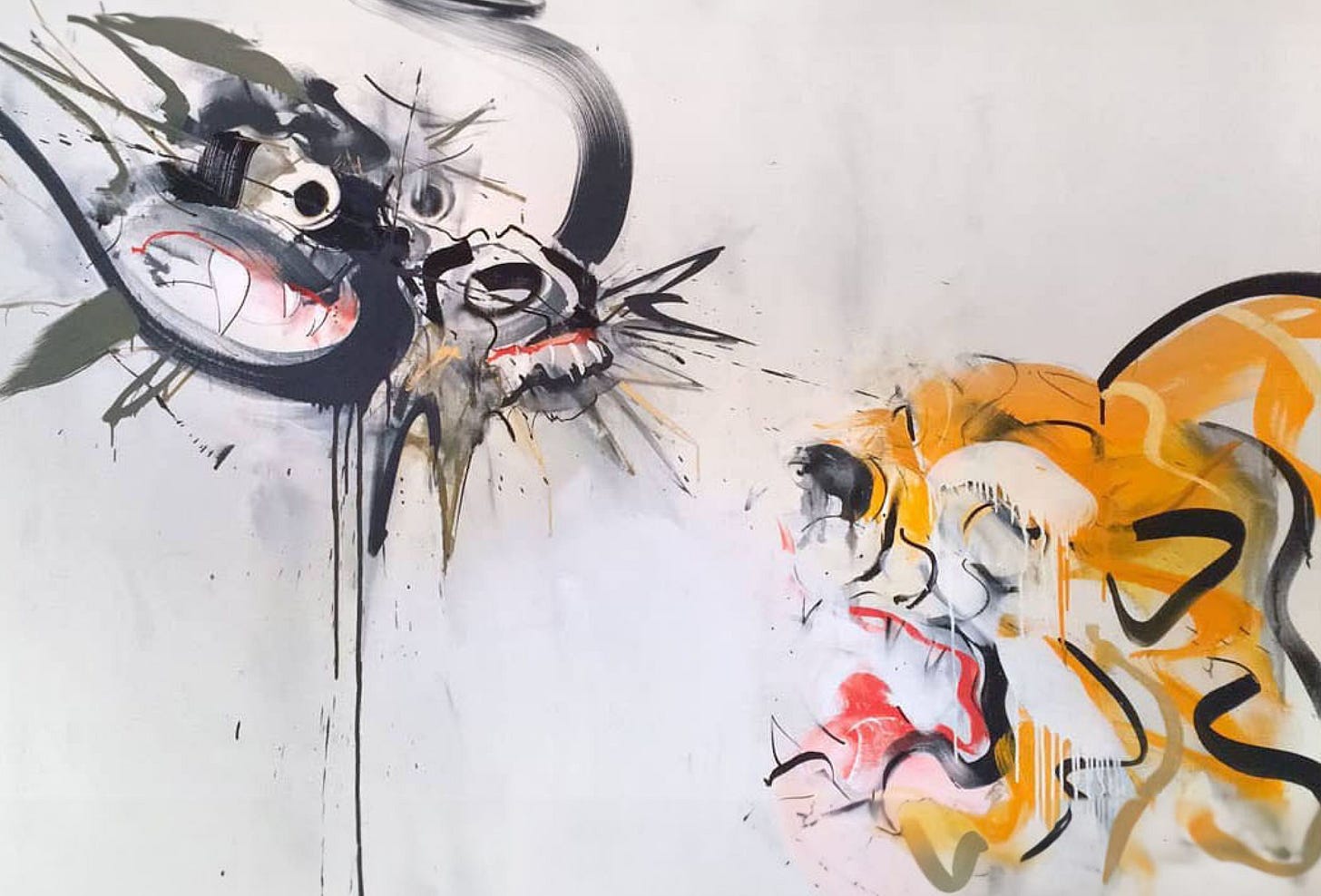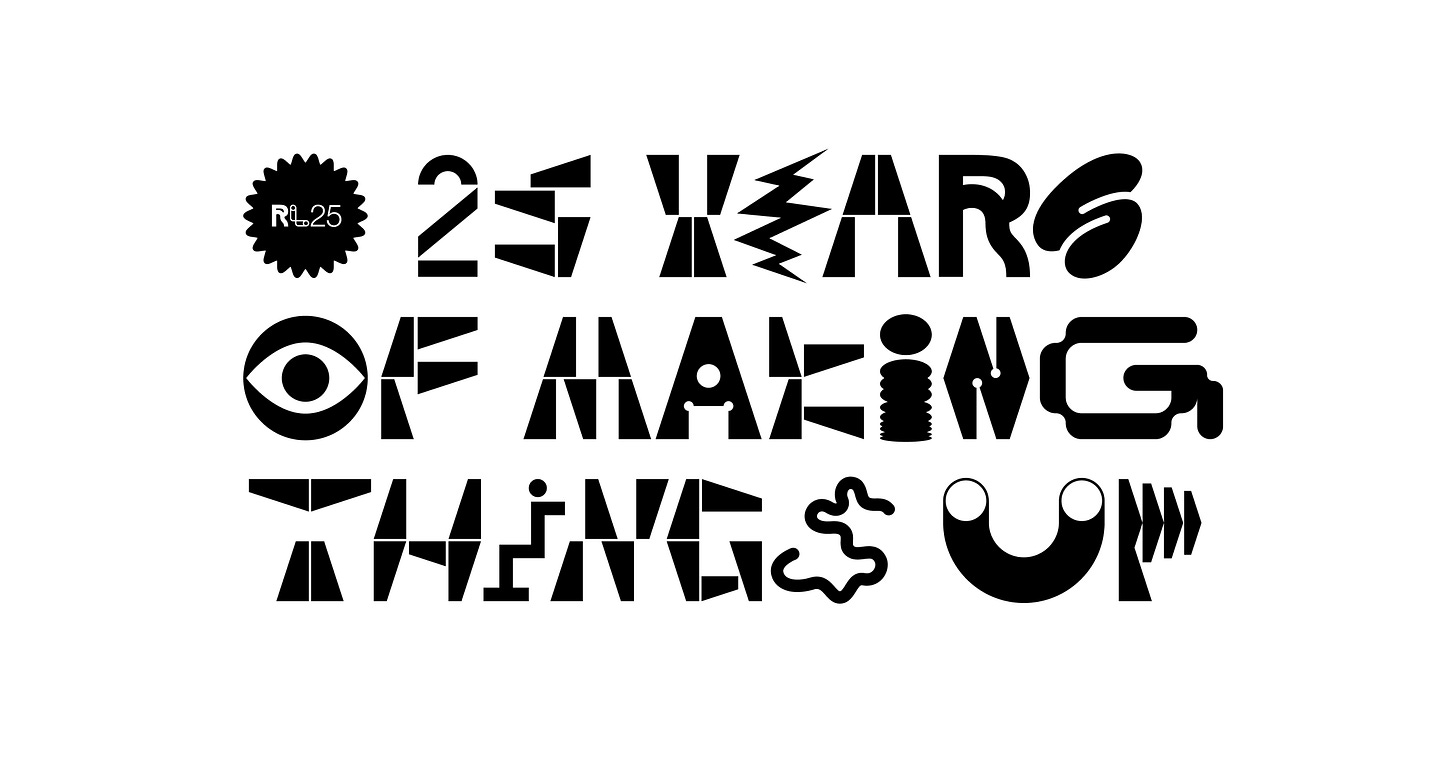This year marks 25 years since Rosie Lee first opened its doors - a milestone that’s prompted reflection in many different directions. I’ve been with the company for most of that time, playing many roles, wearing many hats and navigating the unique relationship that I have with Mark.
The push and pull between creative freedom and commercial focus is where I’ve found the most meaning, and often the most challenge. The truth is, holding those two forces in balance isn’t always easy. Creative wants freedom to explore and to experiment. Strategy wants focus, objectives and clear impact. When those two forces work, the result can be really powerful and not simply loud or clever. But getting there often means sitting in the tensions, having difficult conversations, and being willing to challenge your own preferences.
At Rosie Lee, that balance has defined the way we work - not just in our output, but in our culture. It’s shaped how we hire, how we collaborate and how we’ve grown over the last two and a half decades. This article is a celebration of the messy, rewarding interplay between strategy and creativity - but also an acknowledgment that, even after 25 years, we’re still learning how to get it right.
Two Forces, One Goal
At a glance, creativity and strategy can appear to be opposing forces - one grounded in instinct and imagination, the other in logic and intent. And often, they do come from very different vantage points. But it is important to understand that they’re just different strategies for achieving the same goal: making meaningful work that moves people and delivers impact.
The key to successful collaboration isn’t choosing one over the other, it’s recognising the strengths that each brings and allowing them space to breathe. Strategy brings clarity, focus and a sense of purpose. Creativity brings energy, emotion and the unexpected. Both are essential, and both are powerful tools when they’re respected and given room to shape the process.
When either one dominates or gets shut down too early, the work suffers. When they’re moving forwards together in harmony something much more powerful emerges.
The Rosie Lee Way
At Rosie Lee, we’ve never been purists. We’ve always believed in blending disciplines, perspectives and personalities to make something richer than any single approach could offer. From the very beginning, our work has lived in the overlap between design and messaging, culture and commerce, concept and craft.
This blended approach is embedded in how we build teams and how we make decisions. It’s why you’ll sometimes see the unexpected behind the scenes - find a strategist scribbling in a sketchbook, or a designer leading a client relationship. We don’t split the room into thinkers and makers, we encourage everyone to play in the grey area where those identities merge.
Of course, this way of working isn’t always easy. It requires trust, humility and the willingness to ask questions rather than jump to conclusions. But over time, it has become clear that this blend of creative instinct and strategic clarity is what gives our work its distinct flavour, allowing us to adapt and evolve, and stay excited about what we do, even 25 years in.
When It Works (And When It Doesn’t)
At its best, the relationship between creativity and strategy is the sweet spot for great work. When a clear brief unlocks wild imagination. But it doesn’t always work like that.
Unchecked, strategy can come in too heavy, flattening the magic before it’s had a chance to breathe. Sometimes creative takes a left turn so wild it loses sight of the brief entirely. And sometimes it can seem like strategists and creatives speak a different language and miscommunication or misalignment can happen even when different people are trying to say exactly the same thing! What we’ve learned is that when it doesn’t work, it’s rarely because the two sides are fundamentally opposed, and with time and patience there is always a way through.
One of the most important principles is to not force alignment too early, allowing both sides to show up fully, challenge each other and hold onto the shared goal..
Lessons for Creative Partnerships
After 25 years of working in this push-pull dynamic we’ve learned a few things, sometimes the easy way and sometimes the hard way. The most powerful creative partnerships are built on mutual respect, but also (of equally importance) on difference. You don’t need to think the same way, it’s often better if you don’t. What matters is how you navigate that difference.
One of the biggest lessons is to avoid collapsing everything into one way of thinking. If your creative partner always has to justify every idea with a rational argument, then their passion might reduce and the nuance might get lost. And a strategist’s thinking is never challenged or disrupted by creativity, the work risks becoming too dry.
We’ve also learned that healthy friction requires trust. You need to trust that your partner’s perspective brings value, even when it challenges your own. That trust doesn’t just come from alignment; it comes from experience, from weathering hard projects together and still showing up for the next one. A strong, trust-based working relationship means that no matter how much you disagree or fall out today, tomorrow you’ll both be back to try again.
Conclusion
The interplay between creativity and strategy isn’t something you figure out once, it’s something you keep showing up for project after project. It’s not always smooth, but when it works, it’s magic.
Here’s to the next 25 years of strategy, creativity, chaos and magic!
Written by Russell.







